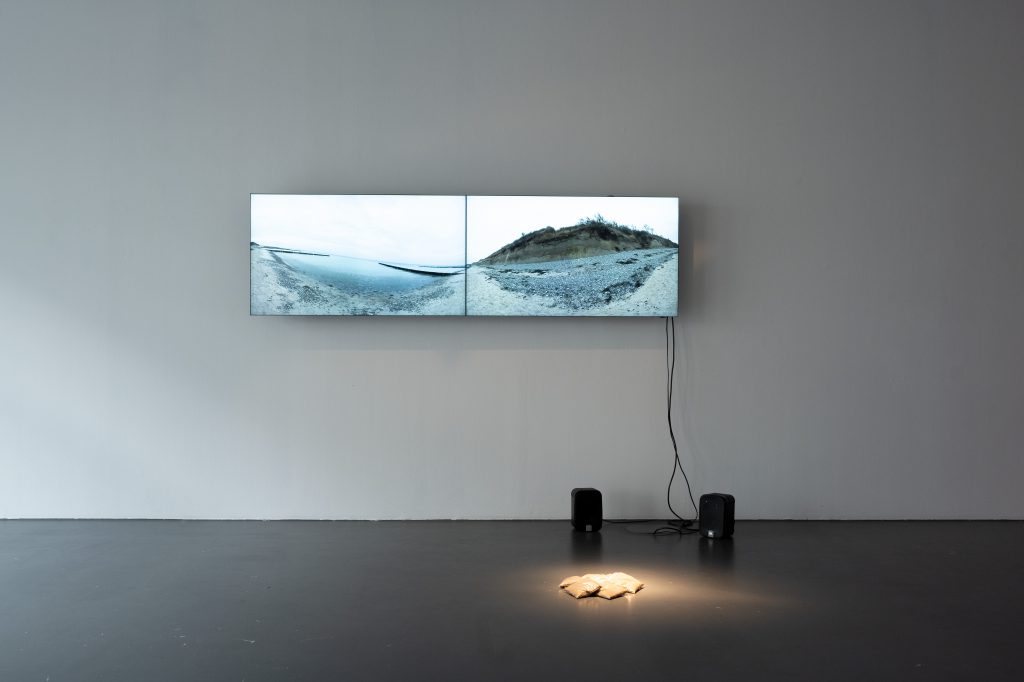


Walking through a mnemonic landscape, 2021
Videowalk 00:14:50h, OT
The work examines the relationship between landscape, memory and heritage of the GDR. It uses the example of a bunker complex on the Baltic Sea, which was used by the GDR to secure the border. The bunkers have migrated from the coast into the sea due to beach erosion. In less than ten years they will have completely sunk into the sea. The disappearance of the monoliths serves here as a metaphor for dealing with the history of the GDR and refers to concepts such as forgetting and non-memory, home vs. flight, history vs. memory, identity vs. othering. Using an archaeological gaze, ethnographic methods and artistic practices, an attempt is made to go beyond field research through the holy trinity of space, time and function to identify the monoliths and aspects of a possible place of remembrance and aspects of a possible place of memory. To question factors of the lack of reappraisal and confrontation of West and East German un-motivation. In addition to intensive research, including ethnographic methods and the use of multi-perspective technologies such as 360-degree videos and binaural audio recorders, an attempt is made to reveal a psychogram of this landscape using psychogeographical means and topographical studies.
In Landschaften eingeschriebene politische Ereignisse thematisiert auch Anne Arndts Videoarbeit „Walking through a mnemonic landscape“, die sich mit den durch Stranderosion an der Ostseeküste sukzessive im Meer versinkenden Bunkern der ehemaligen Grenzsicherungsanlage befasst. Die Videoarbeit ist Teil eines umfangreicheren Werkkomplex mit dem Titel „Die DDR hat’s nie gegeben“, der zur Zeit im Museum Morsbroich, Leverkusen, im Rahmen einer Auszeichnung der Künstlerin mit dem Gleichstellungspreis der KHM zu sehen.